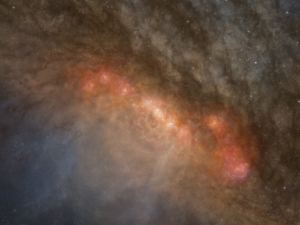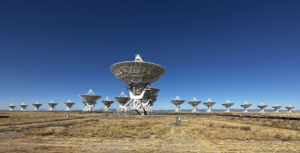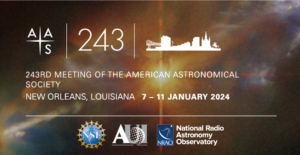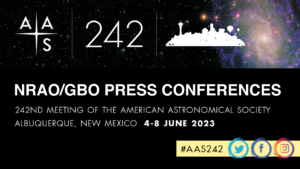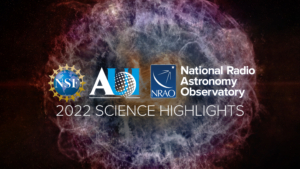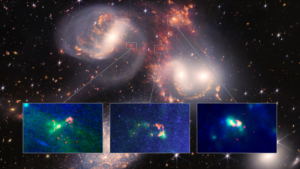Astronomers have discovered the secrets of a starburst galaxy producing new stars at a rate much faster than our…
Mystery of Star Formation Revealed by Hearts of Molecular Clouds
An international team of astronomers has revealed mysterious star formation at the far edge of the galaxy M83. This research was presented today in a press conference at the 243rd meeting of the American Astronomical Society (AAS) in New Orleans, Louisiana. The research used several instruments operated by the National Science Foundation’s National Radio Astronomy Observatory (NRAO), including the Atacama Large Millimeter/submillimeter Array (ALMA), the Karl G. Jansky Very Large Array (VLA), and the Green Bank Telescope (GBT), along with the National Astronomical Observatory of Japan’s (NAOJ) Subaru Telescope and the NASA Galaxy Evolution Explorer (GALEX).
NRAO in the press at AAS 243
New scientific results from the Atacama Large Millimeter/submillimeter Array (ALMA), the Very Large Array (VLA), and Green Bank Observatory…
NRAO and GBO Results Presented at Multiple AAS 242 Press Conferences
New scientific results from the Very Long Baseline Array (VLBA), the Very Large Array (VLA), and the Green Bank Observatory (GBO) will be revealed at multiple press conferences during the 242nd meeting of the American Astronomical Society (AAS) from June 5-7, in Albuquerque, New Mexico.
Science Highlights 2022: Black Holes, Pulsars and Turbulence
The Universe is a dynamic and exciting place, with stars, planets, and galaxies being born, dying, and undergoing dramatic changes. In 2022, the telescopes of the National Science Foundation’s National Radio Astronomy Observatory (NRAO) revealed fascinating new details about several of these processes, and we’re giving you a taste of the greatest radio astronomy moments of the year.
ALMA and JWST Reveal Galactic Shock is Shaping Stephan’s Quintet in Mysterious Ways
Shockwaves resulting from the violent collision between an intruder galaxy and Stephan’s Quintet are helping astronomers to understand how turbulence influences gas in the intergalactic medium. New observations with the Atacama Large Millimeter/submillimeter Array (ALMA) and the James Webb Space Telescope (JWST) have revealed that a sonic boom several times the size of the Milky Way has kickstarted a recycling plant for warm and cold molecular hydrogen gas. What’s more, scientists uncovered the break-up of a giant cloud into a fog of warm gas, the possible collision of two clouds forming a splash of warm gas around them, and the formation of a new galaxy. The observations were presented today in a press conference at the 241st meeting of the American Astronomical Society (AAS) in Seattle, Washington.


